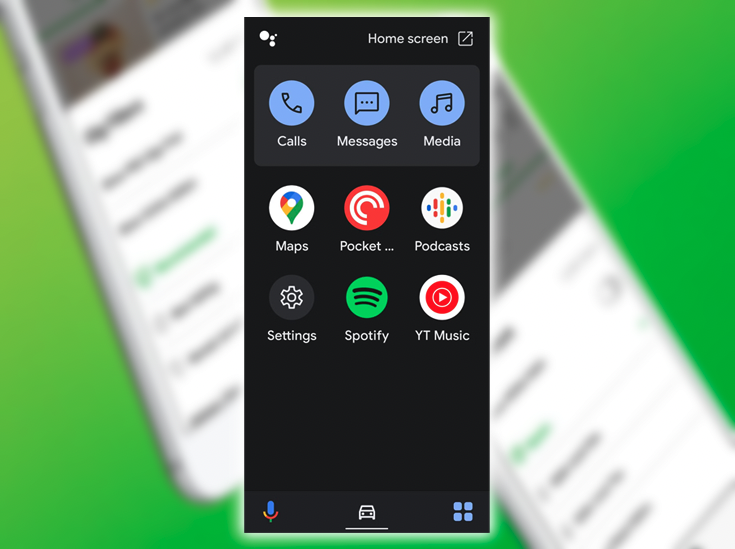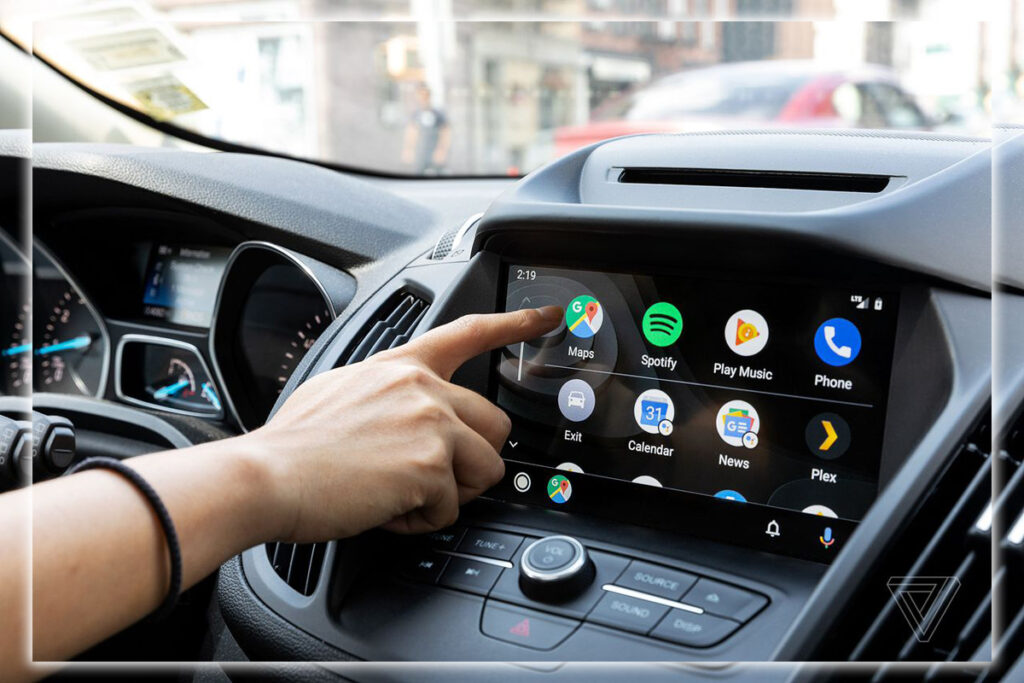No car, No Problem
Of course, you always needed an Android phone with Android Auto running on it. You would plug it into your car via USB. Your infotainment system would show the interface. Use your phone’s data connection information to play music, send texts, navigate via maps, place phone calls, and so on.
For a lot of users, that was no good. Yes, a large growing number of cars supported the standard. But people don’t go to buy a new car every year. And you can’t always plop in a new infotainment system. Consider my case: I drive a Prius. Toyota has invested in Entune software and supports neither Android Auto nor Apple Carplay. And it’s a lease, so I can’t just hack into my dash.

Updates
But I use my phone in the car all the time. I mount it to a bracket that clips to the A/C vent. I use Bluetooth to make calls, listen to music, and get Maps navigation. It’s great, but it’s hard to use while driving. That’s where this new update really makes all the difference. After giving the new Android Auto app a considerable host of permissions. It needs to make calls, send texts, get your location, play music, and so much more. I was allowed to launch the app automatically when it connected to my car’s Bluetooth.
After that, it all seemed very familiar. The on-phone experience is not precisely like the in-dash one, but close enough. It assumes you’ve got a smaller display and doesn’t want to overwhelm you with as much stuff to tap on. And, of course, you can’t control it with buttons on your steering wheel.

But all the main features include maps, directions, and traffic. Making calls. Sending texts by voice. Listening to one of the many supported audio streaming services. You could do this with your phone before. Still, with Android Auto, it’s all pulled into a cohesive, driver-friendly interface. And sticks to a small number of large touch targets. You know, so you don’t kill yourself trying to start up your favorite road trip playlist.
Strong App Support
The list of apps that support Android Auto has grown quite strong. The real downside has been the difficulty of getting it in your car. Now that you get the driver-friendly interface right on your phone. The app is worth picking up for nearly everyone who drives. There’s no split in-app support with this new version. All current Android Auto apps are supposed to work just fine. Developers don’t need to do anything in particular to support the on-phone experience.
Not everything is as perfect as we would like it to be. Using OK voice commands wasn’t yet enabled and came in another update later. There’s an ever-present microphone in the top right; you’ll have to tap that to give Android Auto voice commands. Once you do, all the voice commands that work on the in-dash experience appear to work here. Now that you don’t actually need a car, I can see Android Auto being useful for other types of users. Bicyclists who mount their phones to their handlebars, for instance. Also, you can take it wherever with a Bluetooth speaker. Also use it on your boat; you won’t find nautical traffic reports. But the rest of the features might prove helpful.
















